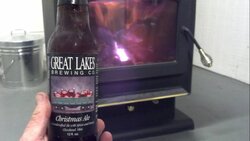I read a recent post regarding burning a secondary stove with a stove pipe damper closed and did a little search/reading of older posts and the idea of using a pipe damper on my Englander 30-NCH is my next experiment on my learnng curve jouney.
What I am thinking is the stove pipe damper will hold more heat in the stove vs. letting it go unrestricted up the chimney. I think it will trap more smoke in the firebox too. With higher firebox temps and more smoke, I ought to get more secondaries and a cleaner burn.
When I got home tonight, the stove was already half way through a burn, so when I closed the damper I got a few more secondaries, but the stove was heading into the charcoal stage so I wasn't expecting much this time around.
Over the weekend, I'll give this stove pipe damper a workout and see how it goes.
Bill
What I am thinking is the stove pipe damper will hold more heat in the stove vs. letting it go unrestricted up the chimney. I think it will trap more smoke in the firebox too. With higher firebox temps and more smoke, I ought to get more secondaries and a cleaner burn.
When I got home tonight, the stove was already half way through a burn, so when I closed the damper I got a few more secondaries, but the stove was heading into the charcoal stage so I wasn't expecting much this time around.
Over the weekend, I'll give this stove pipe damper a workout and see how it goes.
Bill



 ??!!
??!!